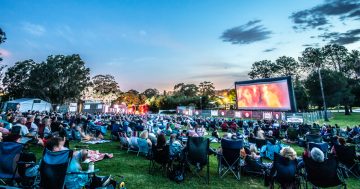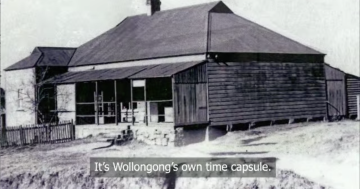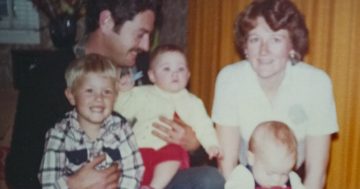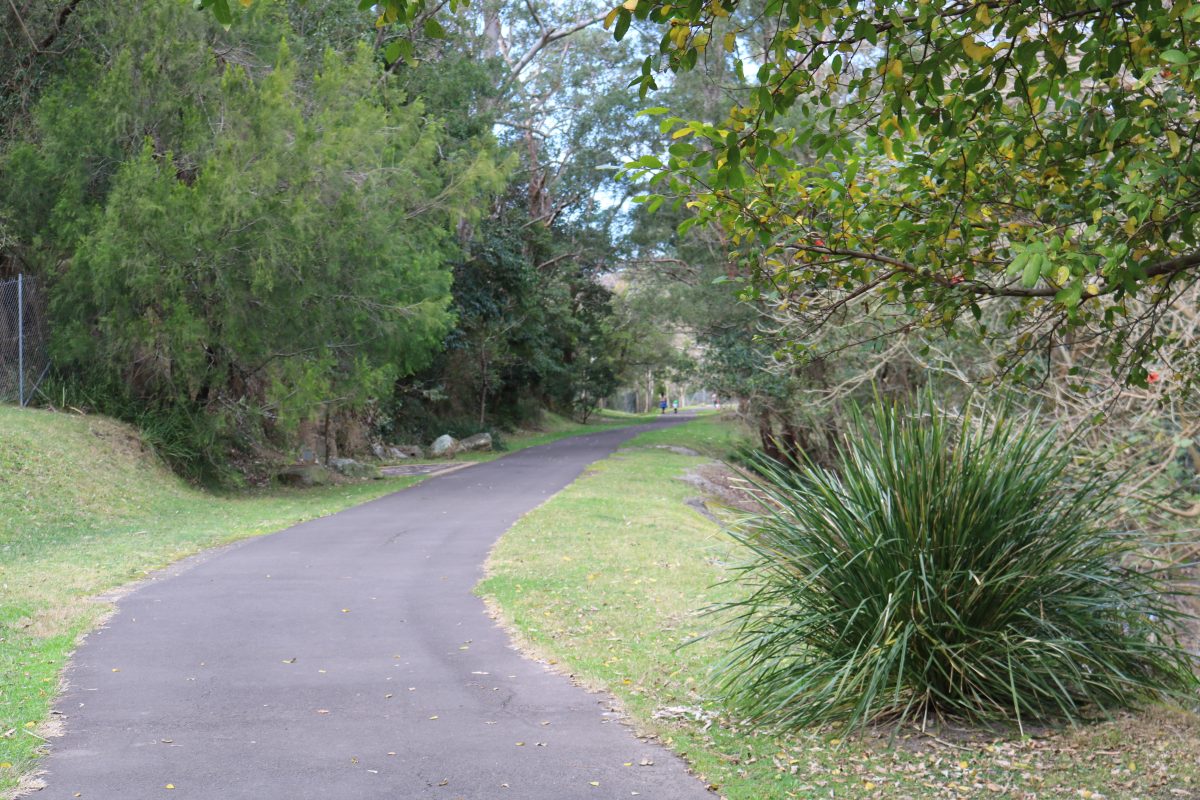
The Mt Kembla Memorial Pathway became a favourite walk for many during COVID-19. Photo: Jen White.
A bushwalk of less than a kilometre with few facilities beyond a water bubbler has become one of Illawarra’s natural jewels, and one that has exceeded expectations since it opened in 2009.
The Mt Kembla Memorial Pathway was primarily intended to honour the village’s rich history and the memory of those who died in the catastrophic 1902 mine explosion. But it has also had some important mental health benefits for the community.
“When we lodged our submission in the early 2000s, it included a letter from a University of Wollongong psychology academic who believed the walk’s tranquil setting would provide mental health benefits for those who use it,” said Elizabeth Roberts, a Mt Kembla resident and member of the founding committee.
Those words resonated during the drawn-out COVID-19 pandemic.
“The walk played a huge role during that time because it was wide enough for individuals and small families to escape confinement to exercise and enjoy the fresh air and beautiful surroundings,” Elizabeth said.
Since then, it has become a favourite recreational spot for groups with intellectual and physical disabilities.
“A vision-impaired group visits regularly, which might seem odd to some people, but we forget the joy that can be had from the subtle fragrances from flowers and trees and the chatter of an abundant bird life,” Elizabeth said.
Wildlife along the walk ranges from wombats and water dragons to deer and echidnas, as well as the odd sighting of snakes.
Built in three stages, the walk meanders up the escarpment to a point not far from where many of the 96 men and boys who died in the explosion now lie buried in Windy Gully Cemetery.
Elizabeth, now 80, a retired bush regenerator, heads the walk’s bush maintenance group, which is mainly comprised of retirees between the ages of 65 and 87 charged with keeping the pathway in tip-top condition.
“It has truly enriched my life. I’ve always enjoyed the outdoors and although I’m not gregarious I like doing things with community people,” she said.
Volunteers Col and Jennifer Meharg, both in their 70s, are devoted members of the Wednesday working bee session.
“This is the first time in my life I’ve ever felt really connected to a community,” Jennifer said.
“We’ve got to know so many people, many of whom stop for a chat to ask what we’re doing.
“The work that has gone into providing the history of Mt Kembla in various spots along the path is also phenomenal – even down to a list of residents who served and survived World War I.”


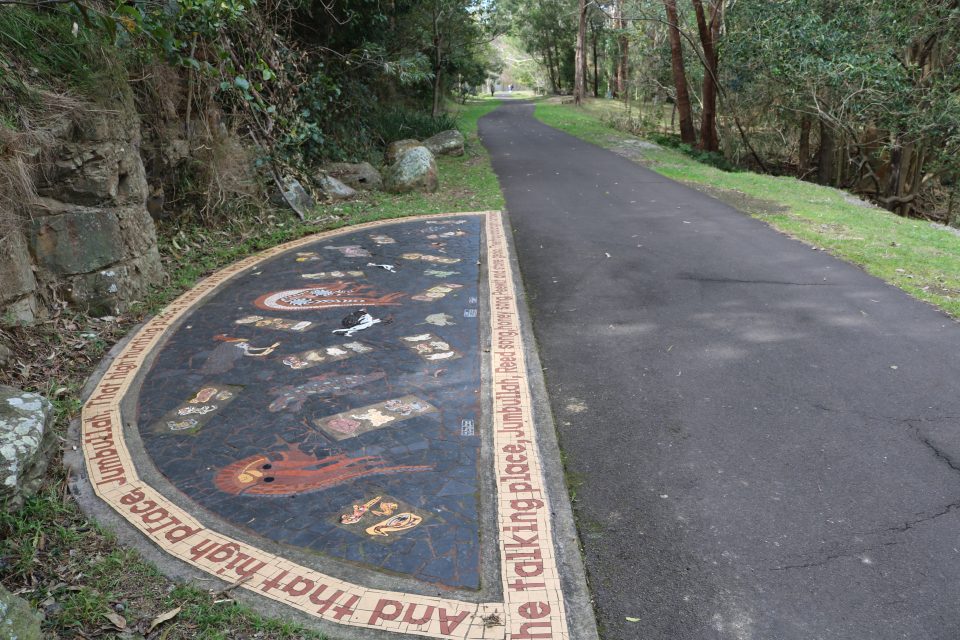
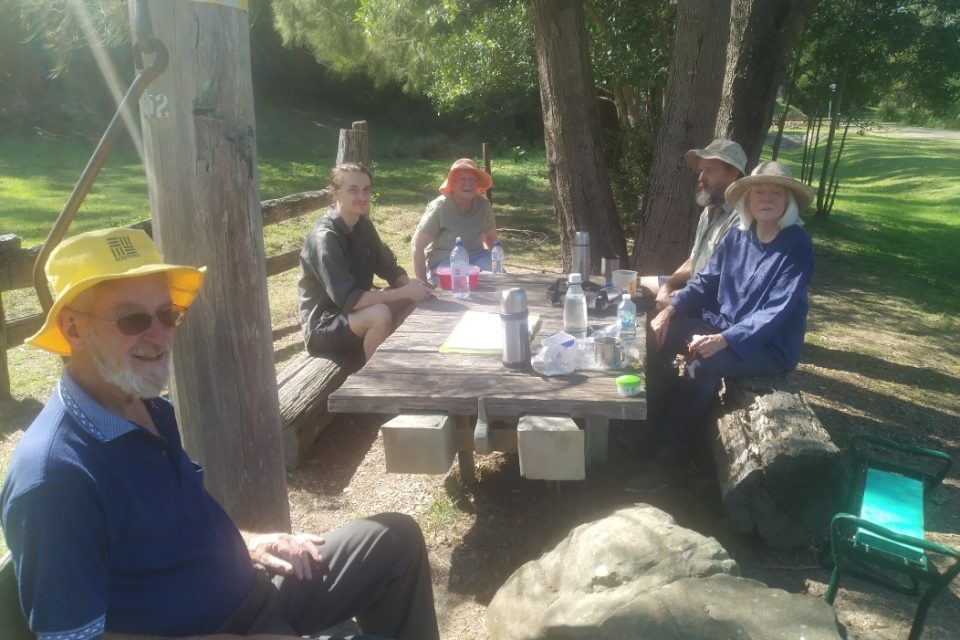
Her husband, Col, who mows, digs and whipper-snips, said it is “one of the joys of retirement”.
“One of the experiences I’ll never forget was the day a python joined us for morning tea,” he said.
“It then climbed under one of the other volunteer’s car, so we did a bit of poking around to move it along,” he recalled with a laugh.
While the group shares a strong sense of camaraderie, Elizabeth said the attrition rate of an ageing volunteer population is a worry.
“It’s a problem for any volunteer group now because of changing demographics in that many mums and dads are both working, unlike my generation where the mother often stayed at home and had time for voluntary work,” she said.
Efforts are underway to attract a younger cohort to join the group through connections with University of Wollongong and TAFE.
All volunteers are supported by Wollongong City Council with protective gloves, sunscreen and liability insurance.
For anybody interested in joining the group, contact Elizabeth Roberts at [email protected]








